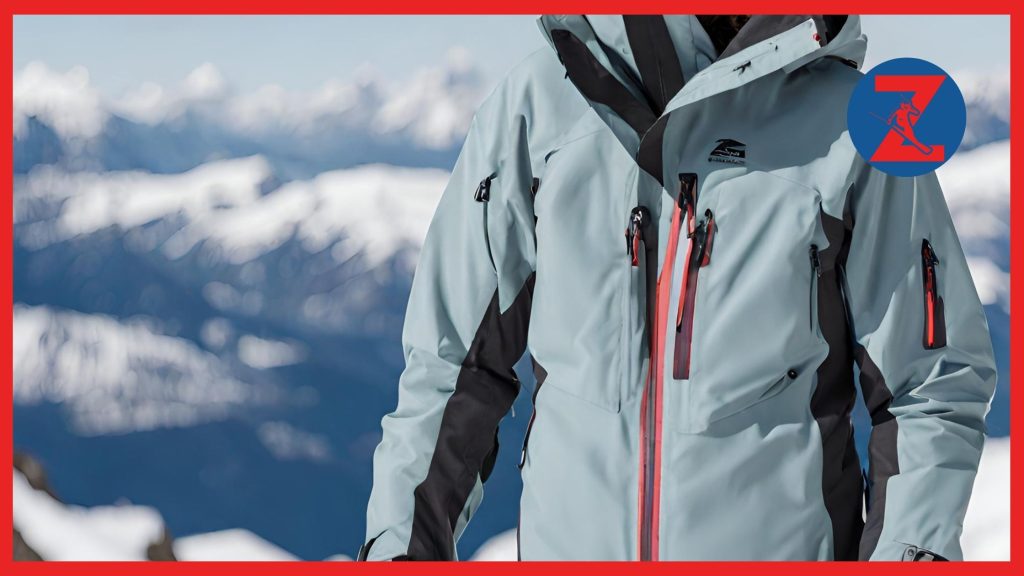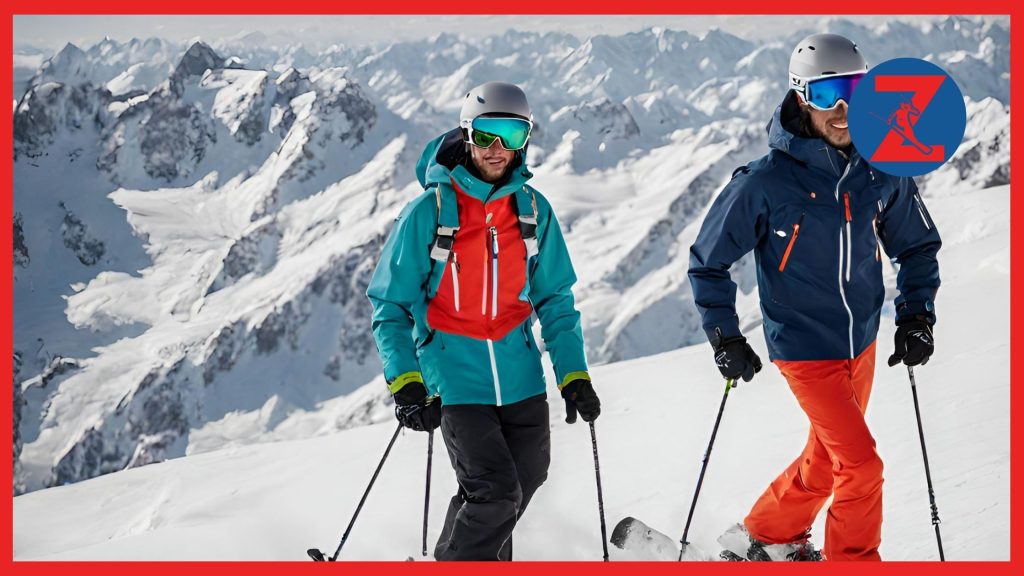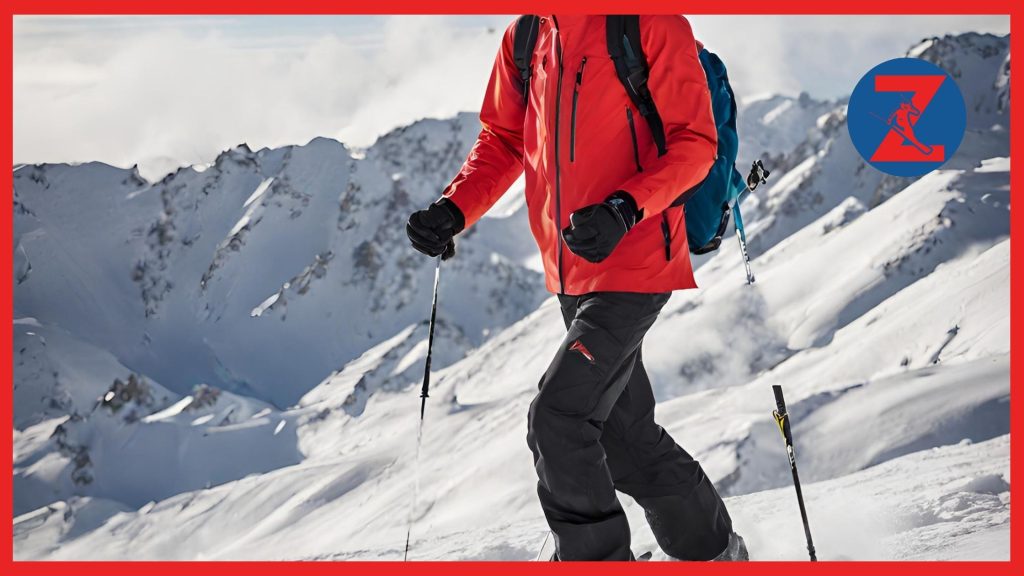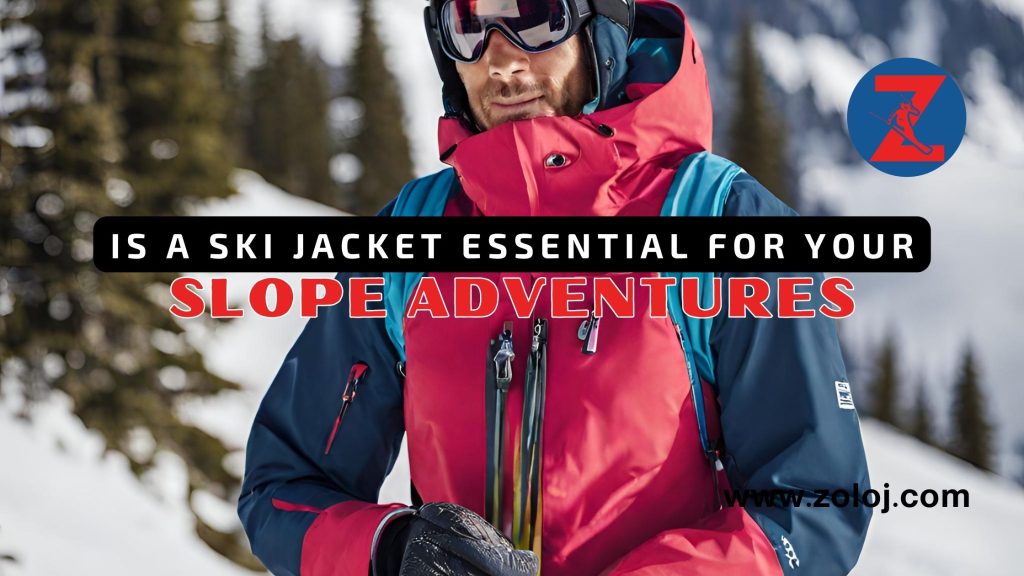When heading out for a thrilling day on the slopes, one question that often arises is, “Do I need a ski jacket?” The answer, without a doubt, is a resounding yes! A ski jacket is an essential piece of gear that will not only keep you warm but also enhance your overall experience on the mountain.
In this article, we will provide a comprehensive ski jacket-buying guide and highlight some key features to consider when choosing the perfect one. Whether you’re a seasoned skier or a beginner hitting the slopes for the first time, understanding the importance of a ski jacket and its features will ensure you stay comfortable, protected, and ready for any weather conditions.
So, if you’ve ever wondered, “Do I need a ski jacket?” or if you’re on the hunt for a new one, this ski jacket buying guide is just what you need. Let’s dive in and discover everything you need to know to make your slope adventures safe, warm, and unforgettable!
Understanding the Importance of a Ski Jacket

When hitting the slopes, one essential piece of gear that should never be overlooked is a ski jacket. Not only does it provide protection from the elements, but it also offers insulation and important features like waterproofing and breathability. So, do i need a ski jacket? Absolutely!
A ski jacket plays a crucial role in keeping you safe and comfortable during your winter adventures. It acts as a barrier against harsh weather conditions such as wind, snow, and cold temperatures. Without a ski jacket, you risk exposure to these elements, which can lead to discomfort, hypothermia, or even frostbite.
Insulation is another vital aspect of a ski jacket. It helps to maintain your body heat, keeping you warm and cozy even in freezing temperatures. Whether you choose down insulation or synthetic alternatives, the right ski jacket will provide the necessary warmth to keep you comfortable throughout the day.
Waterproofing and breathability are two key features that set ski jackets apart from regular winter coats. Ski jackets are specially designed to repel moisture, preventing it from seeping through the fabric and making you wet. This feature is vital when you encounter wet snow or a sudden downpour on the slopes.
Furthermore, breathability ensures that moisture from your sweat can escape, preventing you from feeling clammy and overheated. A breathable ski jacket allows air to circulate, keeping you dry and comfortable while you move and exert yourself on the mountain.
A ski jacket is not just a fashion statement; it’s a functional piece of equipment that ensures your safety and enhances your overall skiing experience. Don’t compromise on your comfort and protection when hitting the slopes. Invest in a high-quality ski jacket and enjoy your winter adventures to the fullest.
Now that you understand the importance of a ski jacket, let’s move on to Section 3 – Choosing the Right Ski Jacket, where we’ll provide a comprehensive buying guide to help you select the perfect jacket for your needs.
Choosing the Right Ski Jacket
When it comes to selecting the perfect ski jacket, there are several key factors to consider. From the right fit and material to insulation types and additional features, making an informed choice will ensure maximum comfort and protection on the slopes. Here is a comprehensive buying guide to help you find the ideal ski jacket for your needs.
1. Fit
The first step in choosing a ski jacket is finding the right fit. A ski jacket should be neither too tight nor too loose. It should allow for easy movement and layering without restricting your mobility. Consider your body shape and personal preferences when selecting a jacket style, such as slim fit, regular fit, or relaxed fit. Pay attention to the jacket’s length as well, making sure it provides adequate coverage without impeding your movement.
2. Material
The material of a ski jacket plays a crucial role in its performance and durability. Look for jackets made from high-quality, waterproof, and breathable fabrics. Common materials used in ski jackets include Gore-Tex, eVent, and Dermizax. These fabrics provide excellent protection against the elements while allowing moisture to escape, keeping you dry and comfortable throughout your adventures on the slopes.
3. Insulation Types
Insulation is essential for keeping you warm in cold weather conditions. There are two main types of insulation commonly found in ski jackets: down and synthetic. Down insulation offers superior warmth and compressibility, ideal for extreme cold conditions. Synthetic insulation, on the other hand, is more suitable for wet conditions as it retains its insulating properties even when damp. Consider the climate you’ll be skiing in and choose the insulation type that best suits your needs.
4. Additional Features
A quality ski jacket will offer a range of additional features to enhance your skiing experience. Look for jackets with adjustable cuffs and hems to customize the fit and keep out snow and cold air. Other useful features include a detachable hood, ventilation zippers for temperature regulation, multiple pockets for storage, and powder skirts to prevent snow from entering the jacket. These features not only add functionality but also improve comfort and convenience on the slopes.
Remember to consider your personal preferences and ski style when choosing a ski jacket. If you’re a beginner, opt for a jacket with simpler features and a more affordable price point. Advanced skiers and those who spend more time on the slopes may want to invest in a jacket with advanced technical features and higher durability.
Take the time to try on different jackets, ensuring proper fit and comfort. Refer to the manufacturer’s sizing guide to find the right size based on your body measurements. If you’re unsure, it’s always a good idea to seek advice from experts at specialty ski stores or consult online reviews from other skiers.
| Fit | Material | Insulation Types | Additional Features |
|---|---|---|---|
| – Neither too tight nor too loose – Consider body shape and preferences – Choose the right style and length | – Look for waterproof and breathable fabrics – Gore-Tex, eVent, Dermizax | – Down insulation for extreme cold – Synthetic insulation for wet conditions | – Adjustable cuffs and hems – Detachable hood – Ventilation zippers – Multiple pockets – Powder skirts |
Essential Features of a Ski Jacket

When it comes to choosing a ski jacket, there are several essential features to consider that can greatly enhance your skiing or snowboarding experience. The right jacket will not only keep you warm and protected from the elements but also provide the necessary functionality for a comfortable and enjoyable day on the slopes.
Waterproofing and Breathability
Keywords: ski jacket waterproofing
One of the most important features of a ski jacket is its ability to repel water and keep you dry in wet and snowy conditions. Look for a jacket that offers a high level of waterproofing, typically measured in millimeters (mm) of water resistance. A higher mm rating indicates better water repellency. Common waterproofing technologies used in ski jackets include Gore-Tex, eVent, and DWR (Durable Water Repellent) coatings.
In addition to waterproofing, breathability is crucial to prevent overheating and perspiration buildup. Look for a jacket that offers good breathability, which allows moisture to escape from the inside of the jacket while preventing water from entering.
Insulation
Keywords: ski jacket insulation types
Insulation is another key feature to consider in a ski jacket, as it provides warmth by trapping body heat. There are two types of insulation used in ski jackets: down and synthetic. Down insulation, typically made from goose or duck feathers, offers excellent warmth-to-weight ratio and compressibility. Synthetic insulation, on the other hand, is made of polyester fibers and performs well in wet conditions as it retains its insulating properties even when damp.
The choice between down and synthetic insulation depends on your personal preferences and the climate conditions you expect to encounter. Down insulation is often preferred for its superior warmth, while synthetic insulation is more suitable for wetter climates or those who have allergies to down feathers.
Other Functionalities
Keywords: ski jacket features
Apart from waterproofing, breathability, and insulation, there are other functionalities to consider when choosing a ski jacket. These include:
- Sealed seams: Jackets with sealed seams offer enhanced waterproofing by preventing water from seeping through the stitching.
- Adjustable hoods and cuffs: Jackets with adjustable hoods and cuffs allow you to customize the fit and seal out the cold.
- Ventilation zippers: Jackets with ventilation zippers allow you to regulate your body temperature by opening or closing the zippers to let in or release heat.
- Reinforced areas: Some jackets have reinforced patches on high-wear areas such as the elbows and shoulders for increased durability.
- Multiple pockets: Look for jackets with multiple pockets, including an inner pocket for storing valuable items and outer pockets for easy access to essentials like a ski pass or goggles.
By considering these essential features, you can choose a ski jacket that meets your needs and provides the necessary protection, comfort, and functionality for an enjoyable day on the slopes.
Waterproofing and Breathability
When it comes to hitting the slopes, one of the most important considerations in choosing a ski jacket is its waterproofing and breathability. These two features are crucial for keeping you dry and comfortable throughout your ski adventures.
Waterproofing is essential to protect you from the snow and moisture on the slopes. A good ski jacket should be able to withstand heavy snowfall and wet conditions, keeping you dry and warm. There are different waterproofing technologies and materials used in ski jackets, such as Gore-Tex and DWR (Durable Water Repellent) coatings, that offer excellent protection against water infiltration.
Breathability is equally important, as it allows sweat and moisture to escape from the inside of the jacket, preventing you from becoming clammy or overheated. A breathable ski jacket allows air to circulate, regulating your body temperature and keeping you comfortable during intense physical activity.
When selecting a ski jacket, it’s crucial to find the right balance between waterproofing and breathability. If a jacket is highly waterproof but lacks breathability, you may end up feeling sweaty and uncomfortable. On the other hand, if a jacket is highly breathable but lacks sufficient waterproofing, you may get soaked during wet conditions.
To provide you with reliable information, we have researched and compiled a comparison table of popular ski jacket brands that excel in waterproofing and breathability. This table will help you make an informed decision and find a ski jacket that meets your needs.
Understanding Different Insulation Types

When it comes to choosing the perfect ski jacket, understanding the different insulation types is essential. The right insulation ensures that you stay warm and comfortable on the slopes, regardless of the weather conditions. Let’s explore the two most common insulation types found in ski jackets: down and synthetic insulation.
Down Insulation
Down insulation is a popular choice among skiers and snowboarders for its exceptional warmth and lightweight properties. It is made from the soft and fluffy under feathers of ducks and geese. Down insulation creates tiny air pockets that trap and retain heat, providing excellent insulation in cold temperatures. The higher the fill power, the higher the quality and warmth of the down insulation.
Down insulation offers superior warmth-to-weight ratio, making it incredibly efficient at retaining body heat. It also allows for better breathability, allowing moisture to escape and keeping you dry during intense outdoor activities. However, down insulation may lose its insulating properties when wet, making it less suitable for wet or humid climates.
Synthetic Insulation
Synthetic insulation is a versatile alternative to down insulation, offering excellent performance in various weather conditions. It is typically made from synthetic fibers such as polyester or nylon. Synthetic insulation is known for its ability to retain heat even when wet, making it a reliable choice for wetter climates or activities that involve a lot of sweating.
Synthetic insulation is also quick-drying and easier to maintain than down insulation. It is hypoallergenic and less expensive than its down counterpart. While synthetic insulation may not provide the same level of warmth-to-weight ratio as down insulation, advancements in technology have greatly improved its performance over the years.
Choosing the Right Insulation
When choosing between down and synthetic insulation, consider the specific weather conditions, your activity level, and personal preferences. If you frequently engage in cold weather activities and prioritize lightweight warmth, down insulation may be your best bet. On the other hand, if you expect wet conditions or prioritize quick-drying properties, synthetic insulation may be a more practical choice.
Remember, both down and synthetic insulation have their advantages and disadvantages. It’s important to find the right balance between warmth, breathability, and weather protection to ensure maximum comfort and performance on the slopes.
Finding the Right Fit and Size
One of the most crucial aspects of choosing a ski jacket is finding the right fit and size that offers optimal comfort and functionality. A properly fitting ski jacket allows for unrestricted movement on the slopes while ensuring maximum protection against the elements. Here’s a sizing guide to help you find the perfect ski jacket:
1. Measure Yourself Accurately
Before purchasing a ski jacket, take accurate measurements of your chest, waist, and hips. Most brands provide size charts that outline the specific measurements for each size.
2. Consider Your Body Type
Consider your body type when choosing a ski jacket size. If you have a slender build or prefer a more fitted look, you may want to opt for a size down. Alternatively, if you prefer a more relaxed fit or have broader shoulders, you may want to consider a size up for added comfort.
3. Layering Preferences
Take into account your layering preferences when selecting a ski jacket size. If you prefer to wear multiple base layers or thicker mid-layers underneath your jacket for added warmth, you might want to choose a slightly larger size to accommodate the extra layers without feeling constricted.
4. Check Brand’s Size Recommendations
It’s important to check the specific size recommendations provided by the brand you’re purchasing from. Different brands may have slight variations in their sizes, so referring to their size charts will help ensure an accurate fit.
5. Try it On
If possible, try the ski jacket on before making a purchase. This will give you a better understanding of how the jacket fits your body and whether it allows for ease of movement. Pay attention to the shoulders, armpits, and sleeves to ensure they are not too tight or too loose.
Remember, a ski jacket that fits well will enhance your overall skiing experience, allowing you to focus on the slopes rather than any discomfort or restricted movement. Use this sizing guide as a starting point to find the perfect fit and size for your ski jacket so that you can enjoy your winter adventures to the fullest.
Conclusion
In conclusion, wearing a ski jacket is essential for your slope adventures. We’ve discussed the importance of considering essential features such as waterproofing, breathability, insulation, sizing, and fit when choosing a ski jacket. These factors not only ensure your comfort but also contribute to your safety on the slopes.
When selecting the right ski jacket, it’s crucial to take into account your skill level, climate conditions, and personal preferences. Reading ski jacket reviews and considering recommendations from fellow outdoor enthusiasts can provide valuable insights and help you make an informed decision.
For beginners, finding the best ski jacket is especially crucial. Look for jackets specifically designed for beginners, which often offer a balance of comfort, warmth, and practicality. Trusted brands like The North Face, Columbia, and Patagonia have a wide range of ski jackets that cater to beginners’ needs.
Stay warm, protected, and ready to conquer the slopes with the right ski jacket. Invest in quality, choose wisely, and enjoy your winter adventures to the fullest.
FAQ
Q: Do I need a ski jacket?
A: Yes, a ski jacket is essential for your slope adventures. It provides protection from the elements and keeps you warm and dry during winter sports activities.
Q: What are some important features to consider when buying a ski jacket?
A: When buying a ski jacket, it’s important to consider features such as waterproofing, breathability, insulation type, fit, and additional functionalities like pockets for storage and adjustable hoods and cuffs.
Q: How do I choose the right ski jacket?
A: To choose the right ski jacket, consider factors such as fit, materials, insulation type, waterproofing, and breathability. Additionally, think about your skill level, climate conditions, and personal preferences to find the perfect jacket for your needs.
Q: What is the importance of waterproofing and breathability in a ski jacket?
A: Waterproofing is crucial in a ski jacket to keep you dry and protected from snow and moisture. Breathability allows moisture and heat to escape, keeping you comfortable and preventing overheating during physical activity.
Q: What are the different types of insulation used in ski jackets?
A: The two main types of insulation used in ski jackets are down and synthetic insulation. Down insulation provides excellent warmth-to-weight ratio, while synthetic insulation offers better moisture resistance and retains warmth even when wet.
Q: How do I find the right size and fit for a ski jacket?
A: Use a sizing guide to measure yourself accurately and determine the appropriate size for your body type and layering preferences. Consider the jacket’s fit, allowing room for mobility without being too loose or restrictive.
Q: What should I consider when buying a ski jacket as a beginner?
A: As a beginner, it’s important to choose a ski jacket that provides adequate insulation, waterproofing, and breathability. Look for jackets with user-friendly features and read reviews to find recommendations for the best ski jackets for beginners.






